Grab your favorite pan and get cooking! If you have the typical cabinet full of pots & pans, here are the differences between them and how they are best used:
Sauté pan:

A sauté pan is the one that has straight sides. It has a larger surface area, which makes it ideal for tasks like searing meat or reducing a pan sauce. The higher straight sides reduce splatter when frying and sauces are less likely to slosh things over the side!
Skillet or frypan:
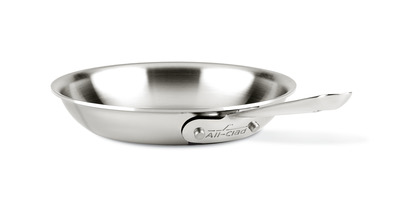
A skillet is the pan with slanted sides and is also sometimes called a frypan or frying pan. A frying pan is a shallow, long-handled pan used for frying food. These pans are not about slow cooking or braising, but perfect for stir-frying and quick cooking techniques where you’re moving ingredients around a lot in the pan which accelerates the evaporation of liquids.. Many times, they do not have lids because they do not have the need to seal in juices as a pan for slow cooking must do. The sides of these pans flare out while the height remains shallow. A skillet/frying pan should not be too heavy to lift or move around easily. It should have a long handle that stays cool so that you feel safe when cooking. This pan is the one to use when you want to sear and brown something fast and then bring the heat down quickly. You may also use a frying pan to sauté, which involves rapid frying in a small amount of fat followed by the addition of other ingredients to the pan, but that technique is better left to a true sauté pan with high straight sides. It’s also good for dishes like omelets or frittatas that are served straight from the pan.
French skillet:
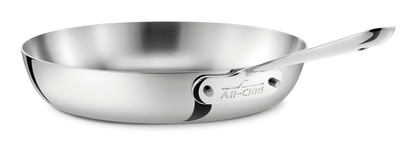
The French skillet is generally deeper and offers a wider cooking surface. It combines the flared sides of a fry pan with the depth of a sauté pan. … The high sides keep the oil and other liquids inside the pan from splashing out. If the French skillet is filled with food, it will cook the food rather than fry it.
Chef pan:
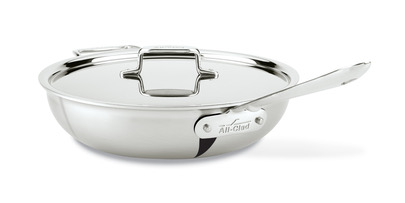
Chef pans are a like a marriage of a skillets and a sauté pan, which looks like a skillet with higher flared or rounded sides but is sometimes found with higher straight sides. A chef’s pan most often will have a long handle and a tight-fitting cover. It is made of a metal with a thick ground base that allows temperature changes to occur rapidly as the level of the heat applied to it changes, either increasing or decreasing for the best heat conduction. Chef’s pans are available in a variety of sizes. They are useful for all kinds of pan-frying, as opposed to deep-fat frying. The height of the sides makes it easier for sautéing, frying or steaming greater amounts of foods, allowing sufficient space for turning and stirring of the contents.
Omelette pan:

An omelette pan has sides that are more flared than an ordinary frying pan to enable the omelette to slide easily out of the pan.
Saucier pan:
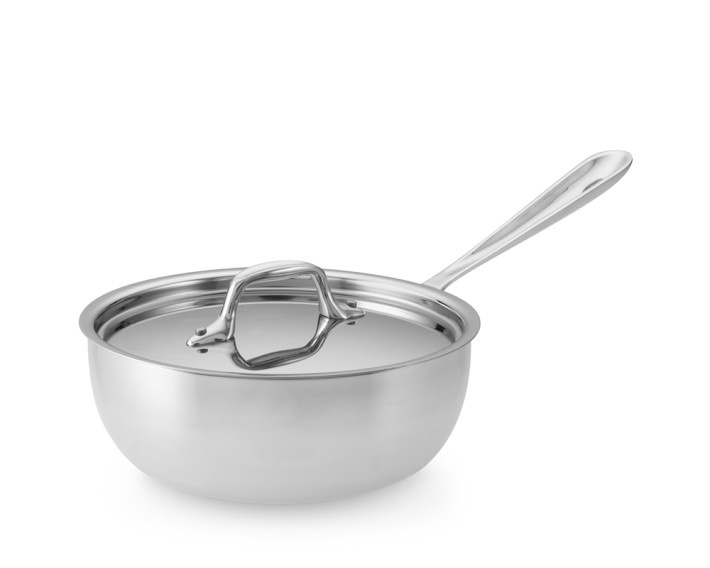
Saucier pans (sometimes also called a chef’s pan), has round flat bottom with curved sides, which makes it easier to keep ingredients moving and facilitate easy whisking and stirring. It is used for dishes that involve constant stirring, such as thick sauces.
Stock Pot:
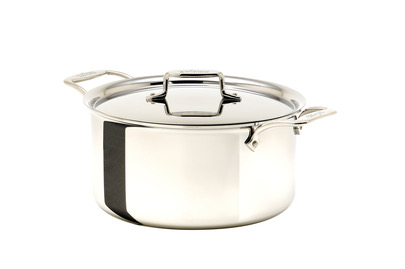
Stock pots (sometimes also called a Soup pot), are commonly used for making soups or stews, or boiling water for cooking pasta or canning. A Dutch oven is similar but usually with a heavier base and overall construction, such as cast iron. The heavy construction is best used for long braises in the oven or deep fat frying.
My favorite cookware is made by All-Clad, and made in the U.S.A. The heavy gauge stainless steel conducts heat evenly, and also reacts quickly to increases and decreases in temperature settings. Invest in good cookware such as All-Clad to last you a lifetime.
As much as I like the stainless steel pans for general cooking, I have several of their skillets, in varying sizes, with a non-stick coating for cooking omelettes, frittatas or eggs that you will want to easily release from the pan.
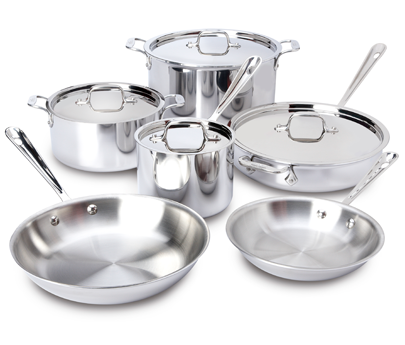
0 comments on “Cookware”Add yours →